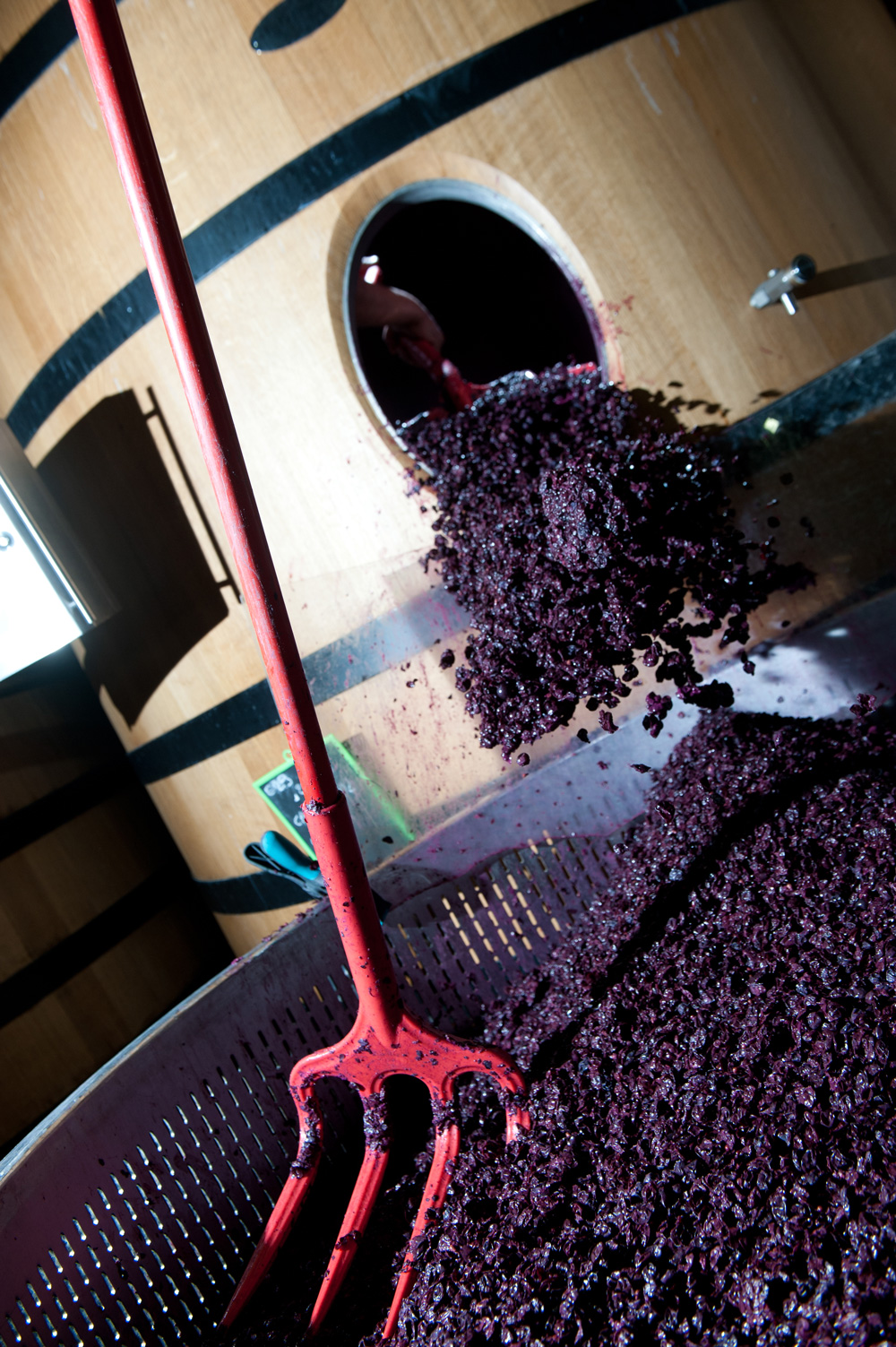Pre-Fermentation

After fresh grapes have been brought in from the vineyards, they can either be fermented immediately, or sorted beforehand. Most high-quality wines are made from grapes sorted by hand, to ensure that only the best grapes make it into the fermenter.
After the optional sorting, the grapes are crushed. For white wines, the juice is collected and removed from the skins for fermentation. For rosé wines, the skins – which contain the pigment – are allowed to soak in the juice until it has achieved the desired pink color, and then they are removed. For red wines, the skins are normally left in contact with the juice for a while before fermentation, to turn the juice red and impart additional flavors. This period of soaking is called “maceration.” Usually, the skins are included in the fermentation of red wine as well. Whites and rosés are fermented without skins.
Fermentation

Fermentation is the conversion of sugar into alcohol, carbon dioxide, and heat. The main genus used is called “Saccromyces.” Sometimes, a winemaker will use specially selected strains of yeast grown in a laboratory to produce special flavors and alcohol percentages. Another option is to allow natural yeast to ferment the juice by leaving it exposed to the air. Wines made with natural yeast are relatively rare. Some experts believe that natural yeast produces wine with more interesting flavor, but also with high variability. A commercial winery that relies on consistent flavor will almost always avoid natural yeast.
Most fermentation takes place in either stainless steel tanks to preserve the fresh character of the grapes, or in oak, which imparts additional flavors to the wine. In the case of red wine, the skins float on the top of the fermentation vessel, and need to be periodically mixed with the liquid for flavor extraction. Two common methods of mixing are punching down the skins, often by hand with a long handled tool, or by pumping over liquid from the bottom of the tank to the top.
Most red wines, and some whites, undergo an additional process called “malolactic fermentation,” which consists of the conversion of tart malic acid into soft lactic acid. Whenever you hear of a Chardonnay that tastes “buttery,” it’s likely from the lactic acid produced by malolactic fermentation.
Post-Fermentation

After the wine is complete, it can be bottled right away or matured. The most common type of maturing is to store the wine in oak barrels. Factors in oak that influence the flavor of the wine are: type of oak, size of barrel, and age of barrel. Smaller barrels impart a stronger oak flavor to the wine, as do new oak barrels. Old barrels and large barrels have a milder effect. In fact, after several years of use, a wooden barrel becomes inert and no longer influences flavor. American oak is said to provide an almost sweet, coconut flavor, as well as baking spices, whereas French oak adds flavors of vanilla and spice.
After bottling, the wine is ready to be shipped, cellared, served, and enjoyed!



